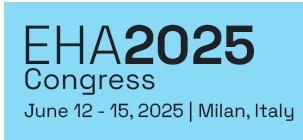

Background: Risk stratification systems provide insight on how baseline risk differs across patients (pts) to inform treatment (tx) decisions. Existing algorithms for pts with RRMM were based on pts in the second-line setting (Hájek R, et al. 2020), and these may not be applicable to TCE or DCE pts given potential differences in prognostic factors and their impact on survival.
Aims: To identify independent predictors of overall survival (OS) and develop a risk stratification algorithm (RSA) for pts with TCE and DCE RRMM using the Flatiron Health database, which collects real-world clinical data from electronic health records across the United States.
Methods: The overall target population was pts with RRMM aged ≥ 18 years with a study period from Jan 1, 2011, to Apr 29, 2024. The TCE cohort included those with prior exposure to 3 tx classes including immunomodulatory agents, proteasome inhibitors, and monoclonal antibodies. The DCE cohort included pts with prior exposure to 2 tx classes. Pts with prior exposure to investigational drugs, bispecific antibodies, chimeric antigen receptor T cell therapy, belantamab mafodotin, and elotuzumab were excluded. Pts with no data available after the index date were also excluded.
Twenty-seven potential prognostic factors in pts with TCE/DCE RRMM were identified by literature review and ranked by 2 clinical experts based on importance in determining OS. Predictors with moderate to high rank were included for variable selection using Cox proportional hazards models and augmented backward elimination (Dunkler D, et al. 2014). Multiple imputation by chained equations was performed to address missing values. Fractional polynomials were used to assess the shape of predictor-OS associations in Cox proportional hazards models. A simplified RSA intended for clinical practice was developed based on Revised International Staging System, age, time since diagnosis (TSD), and refractory status. Four risk groups were defined based on quartiles of the distribution of the risk score. Kaplan-Meier (KM) curves for OS were generated for each risk group. KM curves for progression-free survival (PFS) were generated as a validation of the RSA.
Results: A total of 2823 TCE and 7824 DCE pts were included in this analysis. Independent predictors of OS included age, ECOG performance status, TSD, cytogenetic risk profile, lactate dehydrogenase, β2 microglobulin, albumin, hemoglobin, platelet count, calcium level (only for TCE RSA), refractory status (number of tx classes), number of prior lines, and prior stem cell transplantation. Immunoglobulins (ie, IgA, IgG, IgM) and best response to last tx were excluded due to a high percentage (> 40%) of missing values.
For the TCE cohort, significant differences in OS between the 4 risk groups were observed. For the DCE cohort, median OS was 130, 61, 28, and 7 mo, respectively, in groups 1 (lowest risk) to group 4 (highest risk). Similar stratification was observed across risk groups defined by the simplified RSAs. When the RSA was applied to PFS, differences in PFS between risk groups were significant (TCE cohort: median PFS of 8, 6, 3, 3, and 2 mo for groups 1–4).
Summary/Conclusion: RSAs for pts with TCE and DCE RRMM were developed that can quantify total risk and pt-specific risk, which can be used to inform clinical decision-making. Future studies are warranted to validate the RSA in an external dataset.
References:
